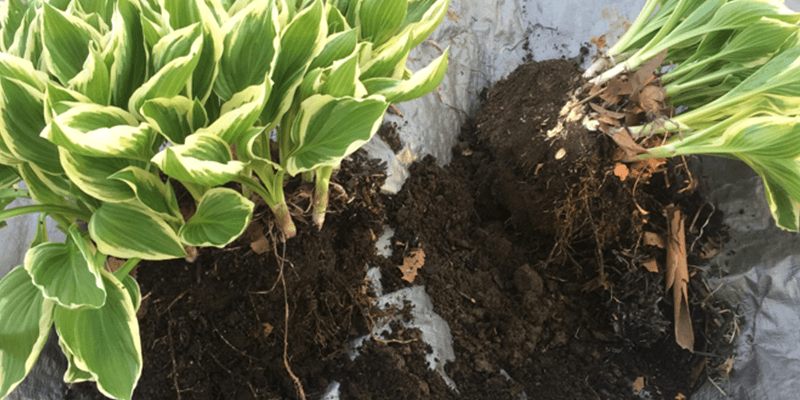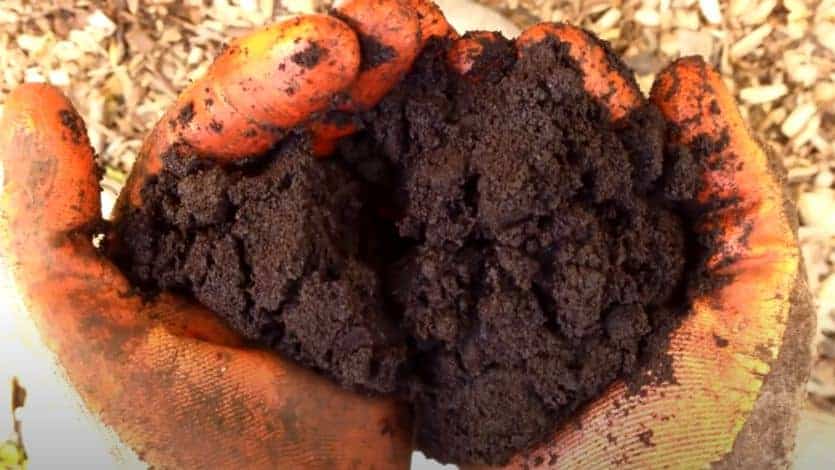
Because coffee grounds have a relatively high nitrogen content, hostas will benefit from an application of coffee grounds used as mulch, but you must use the grounds carefully. Hostas may develop an impenetrable coating if there are too much coffee grounds nearby that prevents water and air from getting to the roots.
The ideal method is to incorporate coffee grinds into your compost pile so that you may benefit from the nitrogen content and combine it with other organic matter for a wider range of nutrients and improved soil structure.
The coffee grounds and compost mixture can then be used as a mulch over your hostas in the spring for enhanced soil structure, moisture retention, and added fertility.
Table of Contents
Why Coffee Grounds are Good for Hostas
Hostas are perennial plants that require a lot of food, which accounts for their big size and lavish leaves.
In reality, larger hostas require more nutrients to reach their full size, shape, and health, with the huge types like “Sum and Substance” and “Jade Cascade” necessitating the soil’s nutrient replenishment each growing season.
As a result, they place enormous demands on the soil during the spring and summer, especially for nitrogen, which is present in coffee grinds in significant quantities.
Additionally helpful for encouraging worm activity in the soil are coffee grinds. Worms enjoy consuming coffee grounds, and their digestion results in “casts,” which are chelated minerals in a highly concentrated form that are simpler for hosta roots to absorb.
As the worms crawl through the soil and consume the coffee grounds, they make channels.
These channels are advantageous to the hosta because they aerate the soil, reduce compaction, and provide room for the hosta’s roots to expand and set down. The hosta will be more resilient to drought or dryer circumstances as a result of the ability of the roots to grow deeper and access moisture reserves deep in the soil.
Worm-created channels improve the soil’s ability to drain. Hosta roots prefer moist soil, but they dislike saturated, slowly draining soil.
Because there are more channels and spaces in the soil, surplus water can drain away from the roots instead of sitting in water where it could lead to fungus disease.
Hostas also need soil that is between a pH of 6-7, or mild acidity to pH neutral. Although the pH of fresh coffee grounds might vary quite a bit, once they have completely broken down, they will fall into the ideal range for hostas, with a pH of 6.5 to 6.8.
How to Spread Coffee Grounds to Benefit hostas

Coffee grinds can be directly added to the soil around the hosta, but it’s crucial not to put too much at once. It only takes one application of a thin layer, roughly half an inch thick.
Because hosta crowns dislike having their tops covered in mulch, leave a 6 inch space between the coffee grinds and the hosta’s crown.
Coffee grinds can harden into a crust that prevents water from penetrating and deprives the roots of oxygen if you put too many in a thick layer.
The soil structure will be enhanced by the compost and the hostas will receive a boost of nitrogen from the coffee grounds in the beginning of the growth season, when it is most needed, if you combine compost and coffee grounds.
In addition to coffee grounds, compost, leaf mold, and manure are also excellent materials to employ because they all have a remarkable potential to hold onto moisture, which is necessary for healthy hostas, as well as a variety of nutrients.
Additionally, these components decompose into a friable porous structure that will combine with the coffee grounds to create the ideal conditions for hosta growth by ensuring proper drainage, aerated soil, and a healthy dose of nitrogen.
Around the hostas, scatter a 2 inch layer of the compost and coffee grounds mixture (ideally, 50% compost and 50% coffee grounds), leaving 6 inches of soil between the mulch and the hosta’s crown. The ideal layer of mulch to keep the soil surrounding hosta roots moist during the drier summer months is 2 inches thick.
As an alternative, you can add the coffee grounds to your compost pile to promote worm activity, which will quicken the compost’s breakdown.
Coffee grounds, despite being brown in color, are considered “green” in the context of composting because they contain more nitrogen than carbon. For a balanced nutrient profile and to ensure an effective rate of composting, it is a good idea to balance coffee grounds with “brown” material (dead leaves, cardboard, shredded paper, etc.) in your compost heap.
Coffee Grounds for Keeping Slugs Away from Hostas
There is some anecdotal evidence that this works to some degree, but no concrete evidence.
Slugs will move over coffee grounds, according to research shown on YouTube, however they do appear to operate as a deterrent because slugs prefer to avoid moving over coffee grounds.
Therefore, coffee grounds may help to keep slugs and snails away from hosta leaves, but this is not a foolproof method to protect hostas.
In my experience, planting hostas in pots that are lifted off the ground on “feet” is the only method that has consistently prevented slugs from eating hostas. On the feet or in the rain shadow of the pot, apply a line of salt-infused Vaseline. Vaseline keeps the salt in place so it won’t wash away in the breeze or dissolve in the rain.
Slugs and snails won’t cross a salt line because the salt will osmotically dry them. This strategy may therefore be quite effective. (Read How to Prevent Slugs Eating Hostas for additional information on how to put this into practice.)
Hostas benefit from coffee grinds because of their high nitrogen concentration.You may use coffee grounds as mulch.
Key Takeaways:
- Hostas benefit from coffee grounds’ comparatively high nitrogen content. Along with phosphorus (P) and potassium (K), nitrogen (N) is one of the essential nutrients that hostas need in large amounts to grow and maintain good health.
- Coffee grinds are useful for encouraging worm activity, which enhances drainage and soil fertility and benefits hostas.
- Applying coffee grinds directly to the soil without adding nutrients might cause a crust that prevents water from penetrating the soil.
- In order to ensure healthy soil structure, maintain moisture, and give nutrients to the soil, combine coffee grounds with compost and spread a 2 inch layer around the hostas.
- Coffee grounds may serve as a slug and snail repellent, but they are not a foolproof method to stop slugs from devouring hostas.
